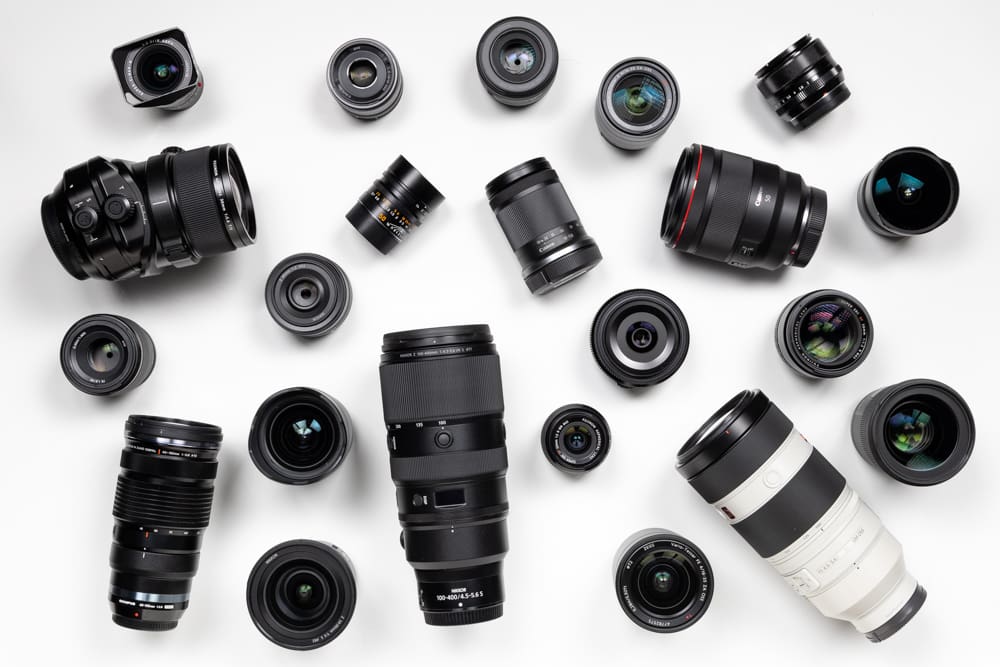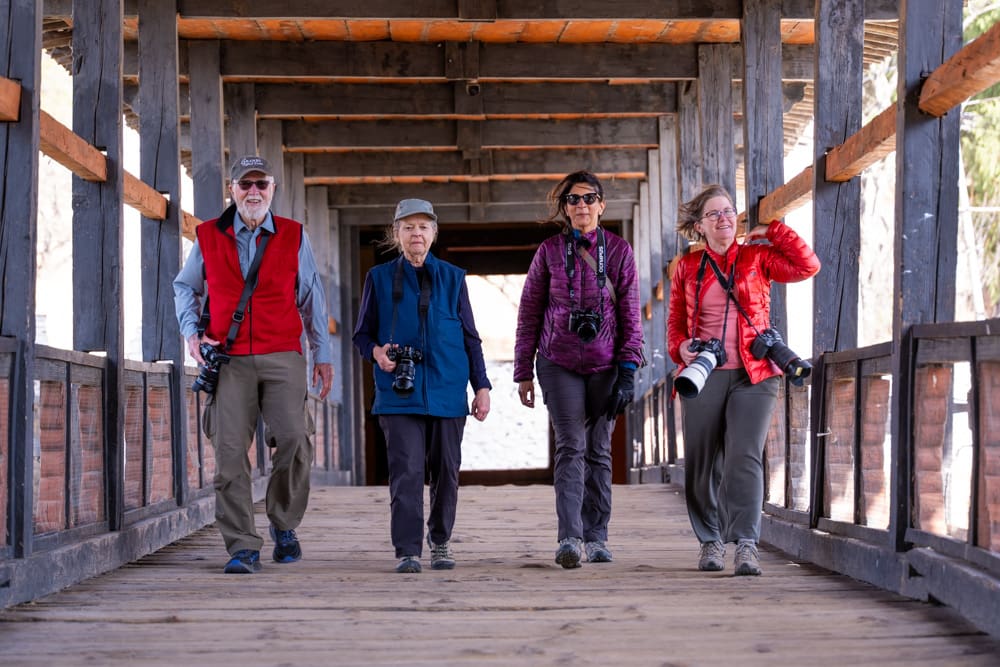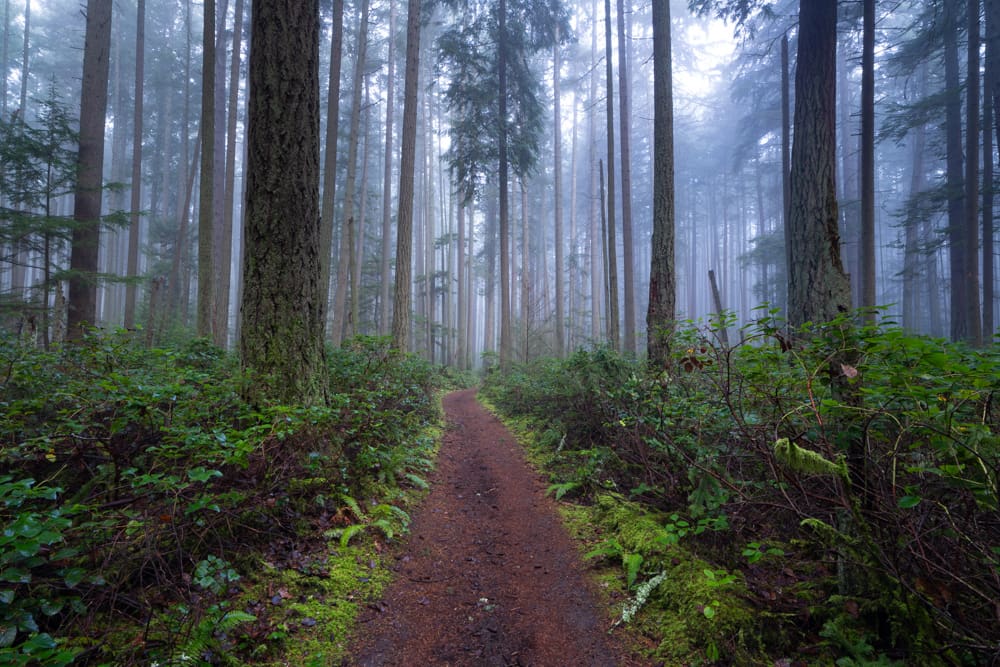I’ve just completed preparations for my latest Camera Buyer’s Guide (now, 2023) video, available for free through CreativeLive, and change is afoot. For the third time in my photographic life, I’m seeing the tipping point where a new type of camera overtakes the market.
The first change I saw with my own eyes was in autofocus, first introduced around 1985 it wasn’t until about 1990 that it became mainstream. There was both a lot of excitement and snickering during this change. The second revolution was the transition from film to digital. The early roots of digital go back to the 1970s. Mainstream digital cameras with interchangeable lenses launched with the Canon EOS D30 in May of 2000. It was a mere four years later that the majority of my colleagues were shooting digital.
We are now at the mirrorless tipping point. In my Camera Buyers Guide I do a complete rundown of everything you should know about when purchasing an interchangeable lens camera. I, of course, go through the differences between DSLRs and mirrorless cameras very closely. To illustrate the change over I wanted to show a comparison of Mirrorless vs DSLR cameras available from all the major brands available today. The slide is a revolution of Mirrorless, nearly double the number of DSLRs available.
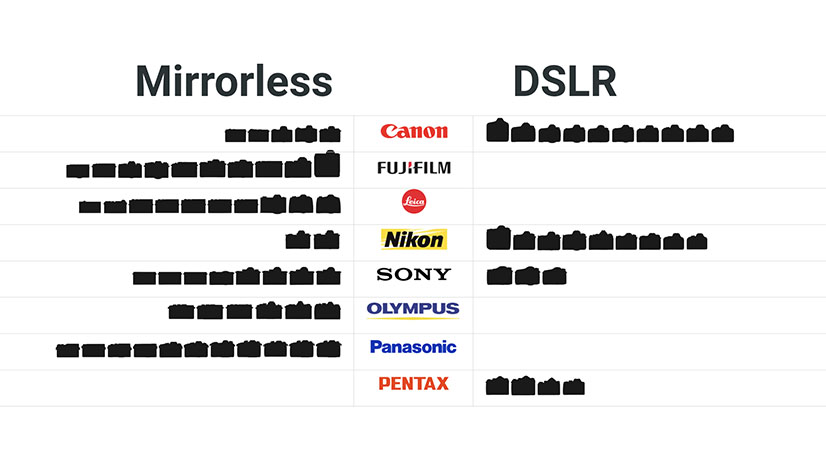
A Shift in Demand
Available models don’t indicate current usage, but it does show market direction. Anecdotal evidence from my in-person classes and tours suggest that about 25% of users have left DSLRs behind. With Nikon and Canon’s new full-frame mirrorless introductions, it’s game on for everyone.
This sea change is important. Just as it was for autofocus and digital because it forced users into a new set of lenses. Yes, I know, there are adaptors and you can use your older lenses, but there are always limitations. If you want the full experience you have to go all in, new camera and new lenses.
The mirrorless cameras have reduced the flange back distance (mount to sensor distance) in order to both save space and give lens engineers greater latitude when designing lenses. This gives us the potential of smaller systems or greater resolution, but likely not both at the same time. The early mirrorless cameras touted their small size, but that was mostly due to their small sensors. Now in the world of full-frame mirrorless, we’re seeing cameras that are bit smaller than their DSLR cousins, but the lenses are just as big, if not even bigger. What’s going on?
I’ve seen this coming for a few years. As the pixel race zoomed upward it was obvious that lens quality had to go up with as well. There’s no sense in wasting pixels if it’s only illustrating how soft the focus of the lens is. Both Canon and Nikon were releasing a torrent of new lenses that were replacing perfectly good lenses. But the new ones were sharper, paving the way for higher resolution sensors. Today we see sensors with 42MP, 46MP, and 50MP from Sony, Nikon, and Canon respectively. These sensors require top notch lenses, which generally means big heavy glass.
The full-frame mirrorless revolution isn’t about size, it’s about image quality and performance. The short flange back distance will allow sharper lenses and the introduction of lenses. The likes of which we’ve never seen before e.g. Canon RF 28-70mm f/2L USM. These high-quality lenses are going to fill your bag very quickly. One of these lenses poised to be matched to a high res sensor is the Sigma 105mm f/1.4 HSM Art lens. A portrait bokeh master if there was ever one, this lens weighs a whopping 3.6lb(1.6kg) and uses 105mm filters. Back when I was a young photographer I heard stories about a favorite portrait lens from Nikon, the 105mm f/2.5. The rumor was that it had a lot of National Geographic covers to its name. That little lens weighed only 15oz (435g) used 52mm filters. Our collective definition of a great portrait lens has changed dramatically.
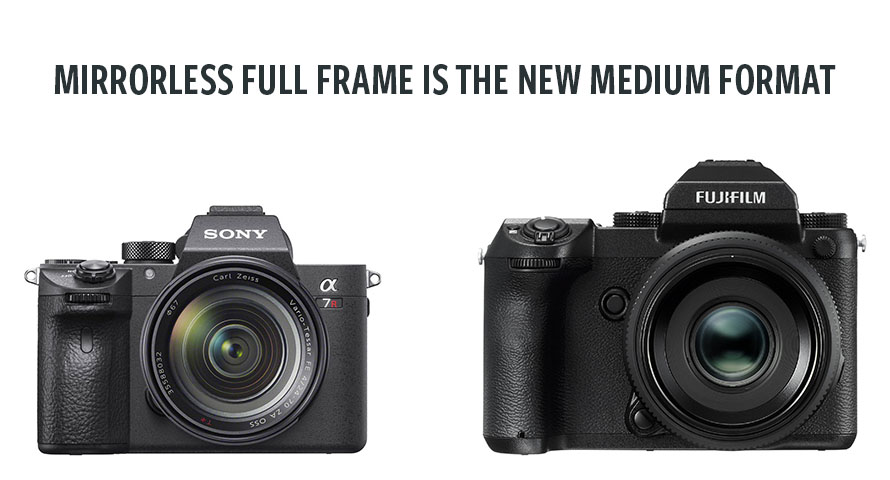
Full Frame is the new Medium Format
With the increase in quality and the requisite increase in lens quality and size, full-frame cameras are now doing the job that the medium format cameras did back in the days of film. For the average photographic enthusiast, a full frame camera and a bag full of lenses is becoming too much. The increase in lens size is something I’ve talked about before. In the 1980s lenses had filter sizes of 52mm to 62mm for most average lenses, in the 1990s it was 67mm to 77mm and now it’s 77mm to 82mm. We are taking higher quality photos than ever before, but it comes at a heavy cost.
It’s hard to argue against quality, I know I’m always looking for the best when I can. But there is a cost to quality, especially if you are in this game because you love it and you’re not trying to make a buck. Heavy gear slows you down, limits your mobility and limits your creativity. The pull to full frame is strong, most of the pros shoot full frame, the YouTubers all talk as if full frame is the Holy Grail. Every mention of a lens has to mention the full frame equivalent. All the cool kids seem to be shooting full frame. Indeed the force is strong.
Full frame isn’t right for everyone, you need to assess what you want to do and what will meet your needs. There will always be a camera or system that can achieve higher results, but at what price are you going to pay for it? I’ve joked about it before, but I’m serious, if you want to find the perfect camera system for you it’s very easy. Go to a camera store and go to the bag section, find a bag that you can live with, day in and day out. Take that bag over to the camera counters and see what camera and lenses you can fit in it. It turns out, that’s what we end up carrying around more than our cameras, it’s our camera bag.
Fuji Fan
This is why I’m such a big fan of the Fujifilm system, they are the only manufacturer that is dedicated to the APS-C sensor. Yes, Nikon, Canon, Sony, and Leica all make APS-C cameras and lenses, but they are split in their dedication to the system. They have other competing products that share the lens mount. They don’t make a full range of dedicated lenses, instead suggesting that you use a lens designed for a different, larger system.
The new Fujifilm X-T3 has many people calling it the best APS-C camera ever, and they may be right depending on your needs, the Nikon D500 is still standing strong. While the full frame cameras pull the majority of the attention, this is where I think a lot of enthusiasts would be best to start. This is why I’m excited about what Fuji is offering, a compelling product with a lighter footprint.
The end of an era
My prediction for the next several years is that Nikon and Canon will accelerate their pivot to mirrorless. This means more mirrorless cameras and fewer DSLRs and accompanying lenses.
The recent Photokina trade show was a hallmark example. The only new SLR introduced was a medium format Leica that will sell in the $20k+ range. When was the last time we went without a major manufacturer introducing a new SLR? My bet was the early 1960s. The introduction of new DSLRs are about to dry up, save for a number of low-end tweaks to the system.
There are many current DSLRs that are likely to be the last of their kind. A Canon 5D Mark V, I think is quite likely, but not necessarily a Mark VI. A Nikon D900 I wouldn’t be too sure about. As Nikon and Canon move to mirrorless, that’s less R&D time and money for the older systems. A lot of the lenses available today will be the last of their kind as the shift to mirrorless progresses.
We are seeing the end of a generation, I’m both a little sad and also very excited. The mirrorless systems are clearing hurdle after hurdle in catching up to SLRs. There are only a few categories that are still being won by DSLRs. For all these reasons (plus more that I’ll talk about in my Camera Buyer’s Guide) you’ll see why I’m recommending that most people start the camera decision process with a mirrorless as the default choice.
Become part of John’s inner circle
Sign up for the newsletter here – it’s free.
Want to become a better photographer?
Check out John’s selection of photography and camera classes here.
